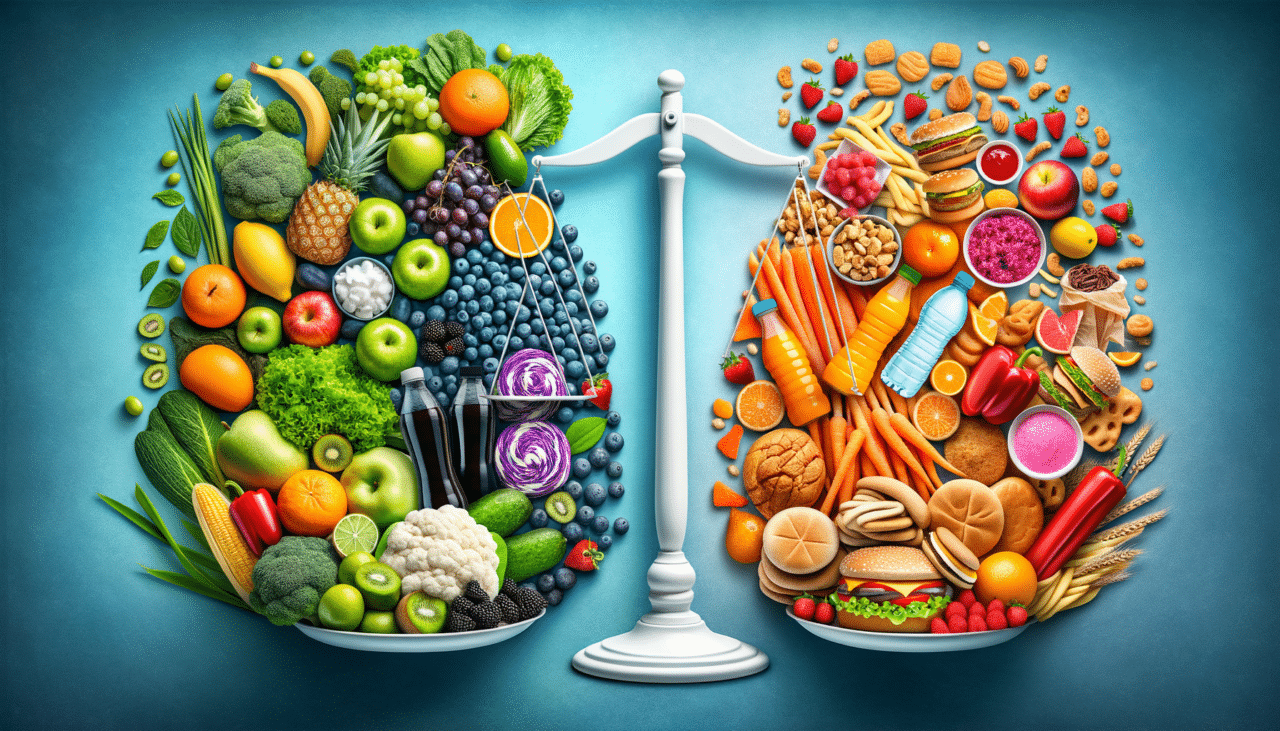In the world of nutrition, the debate between low-calorie and high-calorie diets is as old as time, much like the Nigerian proverb, “The tortoise said he is a slow walker, but he always arrives at his destination.” As Oluwafemi might say, understanding the intricacies of these diets requires patience and insight; they both promise the same destination—better health and weight management—but take vastly different routes. Let’s dive into the details and uncover which path might suit you best.
Characteristics of a Low-Calorie Diet
- Caloric Intake:
-
A low-calorie diet typically consists of consuming fewer than 1,200 to 1,500 calories per day for women and 1,500 to 1,800 for men. This diet focuses on reducing caloric intake to promote weight loss.
-
Food Choices:
-
Emphasizes fruits, vegetables, lean proteins, and whole grains. The idea is to consume nutrient-dense foods that provide maximum nutrition with minimal calories.
-
Weight Management:
-
Often used for weight loss. The reduced calorie intake creates a caloric deficit, encouraging the body to burn stored fat for energy.
-
Health Benefits:
-
Can improve metabolic markers like cholesterol and blood pressure, and may lower the risk of chronic diseases such as diabetes and heart disease.
-
Considerations:
- Not suitable for everyone, especially those with higher energy needs like athletes. It’s crucial to ensure nutritional adequacy to avoid deficiencies.
Characteristics of a High-Calorie Diet
- Caloric Intake:
-
A high-calorie diet involves consuming more than 2,500 calories per day, often necessary for individuals with high energy demands or those looking to gain weight.
-
Food Choices:
-
Includes calorie-dense foods such as nuts, seeds, dairy, meats, and high-fat foods. The focus is on increasing calorie intake while maintaining a balanced diet.
-
Weight Management:
-
Generally used for weight gain or maintenance, especially for those with high metabolism or those looking to build muscle mass.
-
Health Benefits:
-
Can support muscle growth and recovery, enhance energy levels, and improve overall vitality when combined with physical activity.
-
Considerations:
- Requires careful planning to avoid excessive weight gain and associated health risks. Quality of calories is crucial to prevent nutritional imbalances.
Comparative Table: Low-Calorie Diet vs. High-Calorie Diet
| Feature | Low-Calorie Diet | High-Calorie Diet |
|---|---|---|
| Caloric Intake | 1,200-1,800 calories per day | 2,500+ calories per day |
| Primary Goal | Weight loss | Weight gain/maintenance |
| Food Focus | Nutrient-dense, low-calorie foods | Calorie-dense, balanced nutrition |
| Suitable For | Individuals aiming for weight loss | Athletes, bodybuilders, individuals with high metabolism |
| Potential Benefits | Reduced risk of chronic diseases, better metabolic health | Muscle gain, enhanced energy, vitality |
| Key Considerations | Risk of nutritional deficiencies | Risk of excessive weight gain, nutritional imbalance |
In conclusion, choosing between a low-calorie and high-calorie diet is much like choosing between two paths in a forest, as another Nigerian proverb suggests, “He who has a choice has trouble.” Each diet has its merits and potential pitfalls; the right choice depends on your individual health goals, lifestyle, and nutritional needs. Remember, as Oluwafemi might remind us, a well-informed choice is the first step towards a healthier you. So, whether you aim to shed some pounds or gain a few, let this guide light your way through the nutritional maze.

Comments (0)
There are no comments here yet, you can be the first!